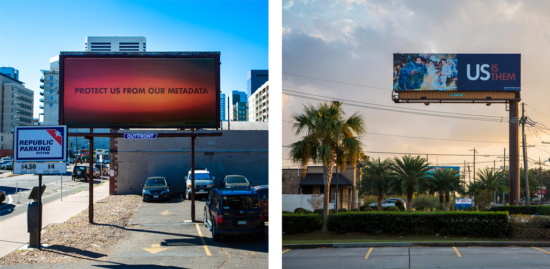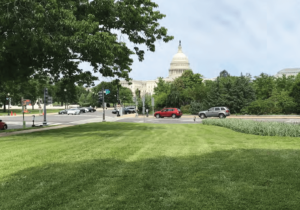The largest public art campaign in U.S. history features 52 artist-designed billboards and will commence in September in all 50 states, the District of Columbia, and Puerto Rico, thanks to more than 2000 backers across 52 Kickstarter campaigns. The publicly-funded campaign is part of the 50 State Initiative, organized by For Freedoms, a project sponsored by non-profit arts service organization Artadia.

The 50 State Initiative also amasses more than 200 institutional partners and 250 artists to produce “additional billboards, lawn signs, town hall meetings, and special exhibitions to encourage broad participation and inspire conversation around November’s midterm elections,” according to a statement from the organizers.

Kickstarter Director of Arts Paton Hindle explained that he was pleased to help the For Freedoms team with their first step. “At their core, both For Freedoms and Kickstarter seek to make art an integral part of society. Having all 52 projects succeed on Kickstarter is an affirmation that the greater global community believes in the power of art to spark dialogue and participation.”
The billboards will tackle nationwide topics such as democracy, religion, sexual orientation, expression, and systemic oppression. Through the launching of the 50 State Initiative, For Freedoms hopes to create “a network of artists and institutional partners,” as well as to “model how arts institutions can become civic forums for action and discussion of values, place, and patriotism.”











